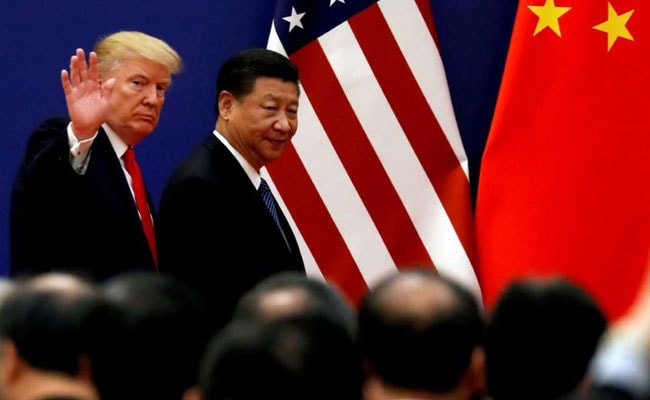
New Delhi:
China now faces tariffs of 245 per cent on import of goods into the United States “as a result of its retaliatory actions”, the White House said Tuesday afternoon (India time) as the trade war between the two countries appears to be run further and further off road.
The announcement came as President Donald Trump authorised an investigation into “national security risks posed by the US’ reliance on imported, processed critical minerals and derived products”, which includes cobalt, lithium, and nickel, and rare-earth metals used to manufacture smartphones and batteries (for electric vehicles), as well as military equipment.
Trump’s order points out the US is “dependent on foreign sources… that are at risk of serious, sustained, and long-term supply chain shocks”. This dependence, the White House said, “raises potential for risks to national security, technological growth, and economic prosperity”.
Until now tit-for-tat tariff exchanges had seen the US levy a 145 per cent tax on Chinese imports and China slap a 125 per cent duty on American goods. Beijing has also banned the export of certain goods, including those used by aerospace manufacturers and military contractors.
On Wednesday morning a top Chinese official claimed the US’ tariffs were putting “pressure” on the country’s economy and trade. However, simultaneously Beijing also said its economy grew a forecast-beating 5.4 per cent in the first quarter.
The Chinese government also said industrial output soared 6.5 percent, up from 5.7 percent in the final three months of 2024, and retail sales climbed 4.6 percent year-on-year.
However, Beijing warned the global economic environment is becoming more “complex and severe” and that more needs to be done to boost growth and consumption.
Trump has repeatedly accused China, India, Brazil, and most of the rest of the world, in fact, of levying higher tariffs on American imports than the US places on goods it imports from them.
The President has argued, and this was a major issue in his re-election campaign, that levying reciprocal tariffs will either force other countries to bring down their taxes or jumpstart a stuttering American manufacturing sector, offering much-needed local employment.
In line with that ‘vision, since the start of the year Trump has imposed steep duties on imports from China, alongside a 10 per cent ‘baseline’ tariff on many US trading partners. These began with cumulative 10 per cent tarrifs in February and March, and a massive 34 per cent in April.
By April 9 the cumulative tariffs on China had crossed 100 per cent, prompting stock markets worldwide, including in the US, to nosedive.
All of this is exclusive, the White House has said, of taxes on specific goods, including separate 25 per centsteel and aluminium, and imported automobiles and auto parts.
China responded in kind and also suspended import of sorghum, poultry, and bonemeal, put trade restrictions on 27 American firms, and filed a complaint with the World Trade Organization.
The tariff war has also prompted Beijing to reach out to India and the European Union to drum up support. Last month China’s Foreign Minister Wang Yi called on New Delhi and Beijing to work together and “take the lead in opposing hegemonism and power politics”.



